Учебное пособие Для студентов вузов Кемерово 2010
| Вид материала | Учебное пособие |
- Учебное пособие для студентов специальности 271200 «Технология продуктов общественного, 2012.38kb.
- Учебное пособие Для студентов вузов Рекомендовано методической комиссией механического, 1136.53kb.
- Учебное пособие для студентов библиотечного факультета Кемерово 1981, 1528.99kb.
- Учебное пособие для студентов педагогических вузов Москва, 712.47kb.
- С помощью программы Autocad учебное пособие Для студентов вузов Вдвух частях, 1127.91kb.
- Учебное пособие (Правление в России с IX по XXI век) для студентов всех специальностей, 1157.71kb.
- Учебное пособие для студентов специальности 260202 «Технология хлеба, кондитерских, 1941.61kb.
- Учебное пособие для вузов / Г. Р. Колоколов. М.: Издательство «Экзамен», 2006. 256, 66.37kb.
- Учебное пособие для студентов медицинских вузов Волгоград 2003г, 624.61kb.
- Учебное пособие Кемерово 2004 удк, 1366.77kb.
Verbs and verb combinations
| to consist of | состоять из |
| to occupy | занимать (пространство), захватывать |
| to separate | отделять(ся), разделять(ся) |
| to be composed of | состоять из |
| to subdivide | подразделять(ся) |
| to flow | течь |
| to include | включать |
| to extend southward | простирать(ся), тянуть(ся) к югу, на юг |
| to bear | нести, выдерживать |
| to head | возглавлять |
| to influence | оказывать влияние |
| to smash | уничтожить |
| to contain | содержать в себе, вмещать |
| to reign | царить, господствовать |
| to debate | обсуждать, спорить, оспаривать |
| to belong to smb. | принадлежать кому-либо |
| to refuse | отказывать, отвергать |
| to sign | подписывать(ся) |
| to be responsible for | быть ответственным за что-либо |
| to survive | пережить, выдержать |
| to be situated upon | быть расположенным |
| to associate with | соединять, связываться |
| to be in favour of | стоять за что-либо; быть сторонником чего-либо |
| to elect | избирать, выбирать |
| to prevail | преобладать, господствовать |
Adjectives
| оfficial | служебный, официальный |
| independent | независимый, самостоятельный |
| separate | отдельный, изолированный |
| plain | ровный |
| swift | быстрый |
| woollen | шерстяной |
| metropolitan | столичный |
| warm | тёплый, жаркий |
| chief | главный, основной |
| general | общий, обычный, главный |
| shadow | теневой |
| particular | особый |
| mutual | взаимный, обоюдный |
| commercial | торговый |
| striking | поразительный |
| heavy | тяжёлый, трудный |
| mediaeval | средневековый |
Ex. 3. Read the words and say what part of speech they belong to and what words they are derived from.
Subdivided, united, striking, constitutional, swiftest, exporter, equipment, famous, beautiful, completely, contains, bigger, wooden, brought, different, election.
Ex. 4. Practise conversion. Form new words according to the model. Fill in blank spaces of the table with correct words. Consult the dictionary if necessary.
Model: Noun → Verb
head → to head
голова, глава → возглавлять
| face | лицо | to face | _______ |
| name | название, имя | to name | _______ |
| drive | _______ | to drive | гнать, нестись |
| board | _______ | to board | сесть на корабль |
| use | _______ | to use | употреблять, пользоваться |
| state | государство, форма | to state | _______ |
| mean(s) | cередина; средство, способ | to mean | _______ |
| sign | подпись, знак | to sign | _______ |
| centre | центр, средоточие | to centre | _______ |
| spread | _______ | to spread | развёртывать, простирать |
| chain | цепь, хребет | to chain | _______ |
Ex. 5. Find in the texts given below the words formed with the help of conversion and state what part of speech they belong to.
Ex. 6. Choose the word that is similar or synonymous to the underlined word.
| 1. mutual | relative | particular | connected |
| 2. valley | hill | plain | forest |
| 3. region | area | part | chain |
| 4. comprise | use | include | take |
| 5. famous | important | occasional | prominent |
| 6. hold | keep | give | lead |
| 7. associate | fill | combine | get |
Ex. 7. a) Read and translate into Russian the following N+N word combinations.
Navigation equipment, world leader, museum walls, architecture masterpiece, inspiration source, high quality goods, visitors attraction.
b) Make up sentences with these word combinations.
Ex. 8. a) Make up as many word combinations as you can choosing from A and B. Translate them into Russian.
A) B)
| everyday | climate |
| main | language |
| low | hills |
| chief | country |
| swiftest | trade |
| woollen | election |
| mild | region |
| official | rivers |
| developed | speech |
| metal goods | goods |
| international | fabric |
| general | value |
| historic | state |
| several | buildings |
| island | |
b) Make up sentences with these word combinations.
Ex. 9. Read and translate the sentences into Russian paying special attention to the different meanings of the underlined words:
1. On either side of the Pennines the plains of Yorkshire and Lancashire stretch to the sea.
2. London is situated on either banks of the Thames River.
3. These days not many people live in the city centre either.
4. In mediaeval times, East Anglia became rich because of the wool trade.
5. The British climate is never too hot or cold, too wet or dry.
6. Kensington Gardens, St. James’s Park are situated in the West End too.
Ex. 10. Insert a suitable word from the box.
1. The United Kingdom of Great Britain and Northern Ireland … the territory of the British Isles.
2. The island of Great Britain is … into two main regions – Lowland Britain and Highland Britain.
3. The … rivers of Great Britain are: the Severn, the Thames and the Avon.
4. England is separated from Scotland by the … ….
5. The UK is a name which was introduced in 1801 when Great Britain became united with … .
6. The British parliamentary system depends on … ….
7. More than 10 million people live in London and its … .
8. The City is … and business centre.
9. The … streets here are Whitehall and Downing Street.
10. During the Fire all … houses were smashed to the ground.
Subdivided, chief, political parties, wooden, best-known, suburbs, the Cheviot Hills, Ireland, commercial, occupies.
Ex. 11. Read and translate the text into Russian.
The United Kingdom of Great Britain
and Northern Ireland
The United Kingdom of Great Britain and Northern Ireland occupies the territory of the British Isles. It consists of four parts: England, Scotland, Wales and Northern Ireland. Their capitals are London, Edinburgh, Cardiff and Belfast.
The United Kingdom of Great Britain and Northern Ireland is the official name of the state which is sometimes referred to as Great Britain or Britain (after its major isle), England (after its major historic part) or the British Isles.
The UK is an island state: it is composed of some 5,500 islands, small and large. The two main islands are Great Britain (in which are England, Wales and Scotland) to the east and Ireland (in which are Northern Ireland and Independent Irish Republic) to the west. They are separated by the Irish Sea.
Geographically, the island of Great Britain is subdivided into two main regions – Lowland Britain and Highland Britain. Lowland Britain comprises southern and eastern England. Highland Britain consists of Scotland, most of Wales, the Pennines and the Lake District. The Pennine Chain extends southward from the Cheviot Hills into the Midlands, a plain region with low hills and valleys. England is separated from Scotland by the Cheviot Hills, running east to west.
The chief rivers of Great Britain are: the Severn, flowing along the border between England and Wales, tributaries of which include the Avon; the Thames, which flows eastward to the port of London and some others. The swiftest flowing river in the British Isles is the Sprey. Another river is the Tweed, near which is made the woollen fabric that bears its name.
There are many lakes in Great Britain. On the northwest side of the Pennine system the Lake District contains the beautiful lakes which give it its name.
The highest mountains are in Scotland and Wales: Ben Nevis is 1,343 metres and Snowdon is 1,085 metres.
The mountains, the Atlantic Ocean and the warm waters of the Gulf Stream influence the climate of the British Isles. It is mild the whole year long.
The UK is one of the world’s smallest countries with an area of some 244,100 square kilometers. The UK is situated off the west coast of Europe between the Atlantic Ocean on the northwest and the North Sea on the east and is separated from the European continent by the English Channel.
The largest cities of Great Britain are: London, Birmingham, Glasgow, Liverpool, Manchester, Sheffield, Bristol, Leeds, and
Edinburgh. The most important ports are: London, Liverpool, Southampton, Belfast, Glasgow and Cardiff.
The population of the United Kingdom is over 57 million people. English is the official language. But it is not the only language which people use in the UK.
The island of Great Britain contains three “nations” which were separate at earlier stages of their history; England, Scotland and Wales. Wales had become part of the English administrative system by the sixteenth century. Scotland was not completely united with England until 1707. The UK is a name which was introduced in 1801 when Great Britain became united with Ireland. When the Republic of Ireland became independent of London in 1922, the title was changed to its present form.
The United Kingdom is a constitutional (or parliamentary) monarchy. The country has a monarch (a king or a queen) as its Head of State. The monarch has very little power and can only reign with the support of parliament. Parliament consists of two chambers known as the House of Lords and the House of Commons.
The United Kingdom is a highly developed industrial country. It is known as one of the world largest producers and exporters of machinery, electronics, textile, aircraft and navigation equipment. One of the chief industries of the country is shipbuilding. The wool industry is centred in Leeds and Bradford, the cotton industry in Manchester, the iron ore goes to the steel, heavy machinery and shipbuilding industries of Newcastle and other cities. The industries of Midlands with Birmingham as its chief city produce metal goods, from motor car and railway engines to pins and buttons.
The country is a world leader in international trade. In January 1973, Great Britain becаme a member of the European Community.
The British Parliament and the Monarch
The British Parliament consists of the House of Lords and the House of Commons.
The House of Commons plays the major role in law-making. It consists of Members of Parliament (called MPs for short), each of whom represents an area in England, Scotland, Wales or Northern Ireland. MPs are elected either at a general election, or at a by-election following the death or retirement of an MP.
Parliamentary elections must be held every five years, but the Prime Minister can decide on the exact date within those five years. The minimum voting age is 18, and the voting is taken by secret ballot.
The British parliamentary system depends on political parties. The political parties choose candidates in elections. The party which wins the majority of seats forms the Government and its leader usually becomes Prime Minister.
Parliament and the monarch have different roles in the government of the country, and they only meet together on symbolic occasions such as the coronation of a new monarch or the opening of Parliament. In reality, the House of Commons is the only one of the three which has true power. It is here that new bills are introduced and debated. If the majority of the members are in favour of a bill it goes to the House of Lords to be debated and finally to the monarch to be signed. Only then it becomes law.
London
The capital of the UK is London. London is one of the largest cities in the world. It is situated upon both banks of the Thames. More than 10 million people live in London and its suburbs. London is a city of striking contrasts. Here one can come across the past and the present, the old and the modern, live side by side in mutual tolerance and respect.
In London, one can see architecture of different centuries and styles. It is inseparably connected with the history of the city. The Romans, the Saxons and the Danes settled here in turn, after them came the Normans, and brought the French civilization. London survived the Plague and the Great Fire, which followed in 1666. During the Fire all wooden houses were smashed to the ground and a New London, London of stone with bigger houses and wider streets was built. During the World War II, many buildings of great historic value lay in ruins and today the face of London is changed.
These days not many people live in the city center either, but London has spread further outwards into the country.
London dominates the life of Britain. It is a big port and most important commercial, manufacturing and cultural centre. There is little heavy industry in London, but there is a wide range of light industry in Greater London.
Traditionally London is divided into several parts: the City, Westminster, the West End and the East End.
The city first started in the place, which is known as the City. It is the Heart of London, it is commercial and business centre. Here you will find the Bank of England and the Stock Exchange. Fleet Street is known as the home of the nation’s newspapers. There are some historic buildings in the City. St.Paul’s Cathedral and the Tower of London are the most famous of them.
The City occupies a territory of 2,650 square kilometers. During a day, it is full of people, nearly half a million people work here.
Westminster is a part of London that has long been connected with royalty and government. Buckingham Palace is the London home and primary residence of the British monarch. Located in the City of Westminster, the palace is a setting for state occasions and royal hospitality.
The West End is the richest part of the city with its beautiful avenues, parks. Hyde Park with its Speakers Corner is also here. Kensington Gardens, St. James’s Park are among other parks. The best-known streets here are Whitehall with important Government offices, Downing Street, the London residence of the Prime Minister and the place where the Cabinet meets.
The name “West End” came to be associated with wealth, luxury, and goods of high quality. It is the area of the largest department stores, cinemas and hotels. There are about 40 theatres, several concert halls, many museums including the British Museum, and the best art galleries.
The East End grew with the spread of industries to the east of the City. It covers a wide area. Here were kilometers of docks, and the great industrial areas that depended upon shipping. The East End is also one of those parts of London where people from abroad have come to find work. For centuries foreigners have made London their home. They brought new skills and started new industries. The East End is especially famous as the centre of the clothing industry in London.
The East End markets are famous throughout the world. Petticoat Lane market takes place every Sunday morning and has become one of the sights of London. This is the East End of London, formerly unattractive in appearance, but now changing because of the introduction of new industries and very expensive housing.
The gradual growth of the city helps explain the fact that London doesn’t have just one centre, that’s why it has a number of centres, each with a distinct character.
Ex. 12. Answer the following questions.
1. What are the main countries of the UK and their capitals?
2. Which countries of the UK occupy the two main islands?
3. What is the area of the UK?
4. Which river is associated with the name of Shakespeare?
5. Which is the swiftest flowing river in the UK?
6. Which is the highest point in the British Isles?
7. What is the population of London?
8. What parts does London consist of?
9. Which river runs through London?
Comprehension check
Ex. 1. Search the texts for the English equivalents of the word combinations.
Официальное название; независимая республика; островное государство; простирается в южном направлении; равнинная область; самая быстротечная река; Британские острова; Озерный край; притоки; главные реки; шерстяные ткани; круглый год; конституционная монархия; поддержка парламента; высоко развитая промышленная страна; кораблестроение; тяжелое машиностроение; железная руда; поразительные контрасты; жить бок о бок; через прошлое и настоящее; неразрывно связано; Чума и Великий Пожар; историческая ценность; символ благосостояния и роскоши; обоюдная терпимость и уважение; облик Лондона; Лондонская фондовая биржа; издание законов; возраст, дающий право на участие в голосовании; знаменательные события.
Ex. 2. Work in pairs. Read the statements and say if they are true or false. Begin each sentence with the following phrases.
A)
1. The UK is an island state: it is composed of some 5,500 islands, small and large.
2. Great Britain and Ireland are separated by the Irish Sea.
3. Highland Britain consists of Scotland, most of Wales, the Pennines and the Lake District.
4. The swiftest flowing river in the British Isles is the Sprey.
5. The highest mountains are in Scotland and Wales: Ben Nevis is 1,343 metres and Snowdon is 1,085 metres.
6. There are many lakes in Great Britain.
7. The House of Commons plays the major role in law-making.
8. The minimum voting age is 18, and the voting is taken by secret ballot.
B)
1. London’s architecture is inseparably connected with the history of the city.
2. London survived the Plague and the Great Fire, which followed in 1669.
3. Westminster is a part of London that has long been connected with royalty and government.
4. The West End is associated with wealth, luxury and goods of high quality.
5. Petticoat Lane market takes place every Saturday morning and has become one of the sights of London.
Ex. 3. Complete the following sentences using information from the text.
A)
1. The United Kingdom of Great Britain and Northern Ireland occupies the territory of….
2. In everyday speech “Great Britain” is used to mean …
3. The two main islands are …
4. The UK is one of the world’s smaller countries with an area …
5. The population of the United Kingdom is …
6. Parliament consists of …
B)
London is one of …
- London is situated upon …
- During the Fire all wooden houses were smashed …
4. Traditionally London is divided into …
5. The city first started in …
6. The East End is especially famous as …
Ex. 4. Rearrange the words below into grammatically accurate sentences.
1. is, of, the world’s smallest, the UK, an area, with, of, countries, some, 244.100 square kilometers.
2. the support, with, reign, the monarch, of, very, has, only, can, power, little, and, parliament.
3. except, the week, of, day, every, Sunday, on, daily, are, published, newspapers.
4. is situated, of, to the east, the City, the port.
Ex. 5. Make questions to which the underlined words are the answers.
1. The two main islands are Great Britain (in which are England, Wales and Scotland) to the east and Ireland (in which are Northern Ireland and the independent Irish Republic) to the west.
2. The swiftest flowing river in the British Isles is the Spey.
3. The Lake district is widely known for its association with the history of English literature and especially with the name of William Wordsworth (1770-1859), the founder of the Lake School of poets.
4. In the 19th century the growth of British colonial power led to the spread of English as world language.
5. London is situated upon both banks of the River Thames.
Ex. 6. Translate into English.
A)
1. Соединенное Королевство Великобритании и Северной Ирландии занимает большую часть Британских островов.
2. Соединенное Королевство состоит из четырех частей: Англия, Шотландия, Уэльс и Северная Ирландия. Столицы этих государств – Лондон, Эдинбург, Кардифф, Белфаст.
3. Население Соединенного Королевства более 57 млн. человек.
4. Самые высокие горы располагаются в Шотландии и Уэльсе: Бен Невис высотой 1343 м. и Сноудон 1085 м.
5. Озёрный край расположен в северо-западной части Англии. Это очень романтическое место, известное своими долинами, горами, озерами и водопадами.
6. Оксфорд – старый английский университетский город. Он расположен в Центральных графствах Великобритании к северо-западу от Лондона.
7. Юго-восток Англии известен своими плоскими равнинами, где расположено много ферм.
8. Великобритания является одним из самых крупных производителей и экспортеров в мире электроники, текстиля и навигационного оборудования.
9. Высший орган законодательной власти – парламент. В его состав входят король, палата лордов и палата общин.
B)
1. Лондон – большой порт и важный торговый, промышленный и культурный центр страны.
2. Римляне дали Лондону его первое название.
3. Развитие большинства отраслей промышленности связано с обеспечением потребностей населения столицы.
4. Лондон – важный международный центр авиалиний.
5. Тауэр Лондона, бывшая резиденция английских королей, была основана Вильгельмом Завоевателем.
6. Три четверти Лондона было уничтожено Великим Пожаром в 1666 году.
7. В Лондоне находятся более 30 музеев, около 40 театров, работает одна из крупнейших в мире библиотека Британского музея.
Ex. 7. Answer the following questions.
1. What is the official name of Great Britain now?
2. What sea separates the two main islands?
3. What influences the climate of the British Isles?
4. What are the largest cities of Great Britain?
5. Who is the head of the state?
6. What makes London important for the life of Great Britain?
7. Who designed St. Paul’s Cathedral?
8. What is the historic part of London?
9. What part can be called the center of London?
10. What industries are developed in Great Britain?
11. What is the political system of the United Kingdom?
12. What is understood by the Commonwealth?
13. Is Great Britain a republic or monarchy?
Ex. 8. Work in pairs or in groups. Imagine you are going to visit Great Britain. Try to get information about this country. Your group mate will play the role of an English. Ask her/him all the questions. Here is the list of possible options.
- the geographical position of the UK;
- the parts of Great Britain and their capitals;
- the political system in the UK;
- the chief rivers;
- the highest mountains;
- London, the capital and the heart of Great Britain;
- a part of London he/she likes most of all ;
- London’s places of interest.
- the most important industrial cities.
Texts for extra-reading
A. Westminster Abbey
It is safe to say that the three most famous buildings in England are Westminster Abbey, the Tower of London and St. Paul's Cathedral.
Westminster Abbey is a fine Gothic building, which stands opposite the Houses of Parliament. It is the work of many hands and different ages. The oldest part of the building dates from the eighth century.
It was a monastery. In the 11th century, Edward the Confessor after years spent in France founded a great Norman Abbey. In 200 years Henry III decided to pull down the Norman Abbey and build a more beautiful one after the style then prevailing in France. Since then the Abbey remains the most French of all English Gothic churches, higher than any other English church (103 feet) and much narrower. The towers were built between 1735— 1740. One of the greater glories of the Abbey is the Chapel of Henry VII, with its delicate fan-vaulting.
The Chapel is of stone and glass, so wonderfully cut and sculptured that it seems unreal. It contains an interesting collection of swords and standards of the "Knights of the Bath". The Abbey is famous for its stained glass.
Since the far-off time of William the Conqueror, Westminster Abbey has been the crowning place of the kings and queens of England. The Abbey is sometimes compared with a mausoleum, because there are tombs and memorials of almost all English monarchs, many statesmen, famous scientists, writers and musicians. In 1997, the funeral of Diana, Princess of Wales, took place there.
If you go past the magnificent tombstones of kings and queens, some made of gold and precious stones, past the gold-and-silver banners of the Order of the Garter which are hanging from the ceiling, you will come to Poets' Corner. There many of the greatest writers are buried: Geoffrey Chaucer', Samuel Johnson, Charles Dickens, Alfred Tennyson, Thomas Hardy and Rudyard Kipling. Here too, though these writers are not buried in Westminster Abbey, are memorials to William Shakespeare and John Milton, Burns and Byron, Walter Scott, William Makepeace Thackeray and the great American poet Henry Wadsworth Longfellow.
Here in the Abbey there is also the Tomb of the Unknown Warrior, a symbol of the nation's grief. The inscription on the tomb reads: "Beneath this stone rests the body of a British Warrior unknown by name or rank brought from France to lie among the most illustrious of the land..."
In the Royal Air Force Chapel there is a monument to those who died during the Battle of Britain, the famous and decisive air battle over the territory of Britain in the Second World War.
Notes:
The Chapel of Henry VII – часовня Генриха VII (сооружена в 1503-1513гг.; один из лучших образцов перпендикулярного архитектурного стиля)
Edward the Confessor – Эдуард Исповедник (король Англии с 1042 по1066гг.)
Henry III Генрих III (1207-1272) – английский король с 1216г. (при Генрихе III создан первый английский парламент)
fan-vaulting нервюры, веерный ребристый свод
“Knights of the Bath” – кавалеры ордена Бани (один из высших орденов; учреждён в 1425г.)
stained glass витраж
the Order of the Garter – орден Подвязки (высший орден; число награждённых, не считая иностранцев, не должно превышать 24; учреждён в 1348г.)
Geoffrey Chaucer – Джефри Чосер (1340-1400), поэт, прозаик, «отец английской поэзии»; автор «Кентерберийских рассказов» - одного из первых памятников на общеанглийском литературном языке
Samuel Johnson – Сэмюэл Джонсон (1709-1784), английский критик и поэт, составитель словарей
Alfred Tennyson – Алфред Теннисон (1809-1892), английский поэт, автор цикла поэм «Королевские идиллии» (1859)
Thomas Hardy – Томас Харди (1840-1928), английский романист и лирический поэт, автор романов Тэсс из рода д’Эрбервиллей (1891) и Джуд Незаметный (1896)
Rudyard Kipling – Редьярд Киплинг (1865-1936), английский писатель и поэт, автор рассказов о жизни мальчика Маугли среди зверей (Книга джунглей, 1894, Вторая книга джунглей, 1895), автор стихов баллад; лауреат нобелевской премии (1907)
John Milton – Джон Мильтон (1608-1674), английский поэт, политический деятель; завершает историческую полосу развития художественной культуры Англии, возникшей в эпоху Возрождения; автор поэм «Потерянный рай» (1667), «Возвращённый рай» (1671) и др.
William Makepeace Thackeray – Уильям Мейкпис Теккерей (1811-1863), английский романист, автор романа «Ярмарка тщеславия» (1848), воплотившего социально-типические пороки буржуазного общества, исторических романов «История Генри Эсмонда» (1852) и «Виргинцы» (1857)
Henry Wadsworth Longfellow – Генри Уодсуорт Лонгфелло (1807-1882), известный американский поэт, автор поэмы «Песнь о Гайавате» (1855) – эпоса о народном герое индейцев
Royal Air Force – ВВС Великобритании
Battle of Britain – Битва за Англию (воздушные бои в районе Лондона и южной Англии в 1940-1941гг.)
Ex. 1. Complete the sentences below. Then look at the plan of the text and refer each sentence to the part it comes from. One sentence has been done for you.
1. It contains an interesting collection of swords and standards of the “Knights of the Bath”. (The Chapel of Henry VII)
2. The oldest part of building dates from
3. Since the far-off time of William the Conqueror
4. In 200 years …decided to pull down the Norman Abbey and …
5. Westminster Abbey is a fine …building, which stands opposite…
6. There many of greatest writers are buried: …
Ex. 2. Imagine that you are inside Westminster Abbey. Make a list of those things that you can see there.
For example: stained glass, a collection of swords, banners hanging from the ceiling.
Compare your list with that of your groupmate.
Ex. 3. Suppose you are a guide in Westminster Abbey. What would you tell the tourists about its history?
B. The History and Meaning of the Union Jack
The British Flag: a Symbol of Unity
The Union Jack is a transnational flag full of historical significance. It represents the union of different countries and the growth of a family of nations whose influence extends far beyond the British Isles. This far-reaching influence is still seen today in the incorporation of the Union Jack in other national flags such as that of Australia. The British flag is called the "Union Jack", an expression that needs to be explained.
The Union Jack is a fine expression of unity as well as diversity. The British flag incorporates the national symbols of three distinct countries, England, Scotland and Northern Ireland. In fact its name "Union Jack" emphasises the very nature of the United Kingdom of Great Britain and Northern Ireland as a union of nations. The countries comprising the British Isles are not inward-looking or isolated states with an insular mentality; together they constitute a powerful union that has spanned centuries. Recent devolution that gave Scotland its own Parliament and Wales its own Assembly has also emphasised the importance of individual national identities within the union without affecting the essential unity of Great Britain. On the contrary, it has strengthened it. Recognition of, and respect for national identities are an essential ingredients for effective union. The Union Jack symbolises all this: respect for individuality within a closely knit community.
The "Union Jack" or "Union Flag" is a composite design made up of three different national symbols:
 |  |
| St. George's Cross, the flag of England | St. Andrew's Cross, the flag of Scotland |
 |
| St. Patrick's Cross, the flag of Ireland |
The cross represented in each flag is named after the patron saint of each country: St. George, patron saint of England, St. Andrew, patron saint of Scotland and St. Patrick, patron saint of Ireland.
The image below renders the idea of the union of the three flags forming one unified, transnational Flag.
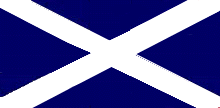
No mention has been made of the Welsh flag. The Welsh dragon was not incorporated into the Union Flag because Wales had already been united to England when the first version of the Union Flag was designed in 1606.
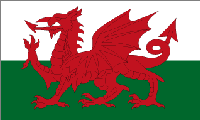
The name "Union Jack" became official when it was approved in Parliament in 1908. It was stated that "the Union Jack should be regarded as the National flag".
When is the Union Flag Flown?
The Union Flag is flown on government buildings on days marking:
- the birthdays of members of the Royal family,
- Commonwealth Day,
- Coronation Day,
- The Queen's official birthday,
- Remembrance Day and on the days of the State Opening and prorogation of Parliament.
It is also flown on St David's Day (Wales), St George's Day (England), St Andrew's Day (Scotland), and St Patrick's Day (Northern Ireland).
C. The Tower of London
The Tower of London was originally built by William the Conqueror, following his successful invasion of England in 1066.
The Tower of London is perhaps better known as a prison. The prisoners would be brought across the river from Westminster where have been tried and crowds would wait on the river bank to find out the verdict to see if they would be treated to the spectacle of a public execution. The executioner, with his long sharp axe would stand behind the accused on the boat. If the accused was guilty he would point his axe towards the victim and if not guilty he would point away. People knew that if found guilty there would be a public execution 48 hours later. The responsibility for looking after the prisoners was given to the Yeomen Warders or Beefeaters. These guards, although looking very similar, are different from the Yeomen of the Guard. The Yeomen Warders originate from twelve Yeomen of the Guard, who were once private bodyguards of Henry VIII.
In the centre of the Tower of London there is the famous White Tower. It is the oldest part of the fortress. The Tower, or Bloody Tower as it is known, has been host to many famous executions and imprisonments, including those of Anne Boleyn, Catherine Howard, Lady Jane Grey and Sir Walter Raleigh, Elizabeth I. Many people have been locked in the Tower for religious beliefs or suspected treason.
Elizabeth I was held prisoner in the Tower for two months by the order of her half sister, Queen Mary. Mary felt her throne was being threatened by Elizabeth, so she imprisoned her in the Tower.
For over 900 years, the Tower of London has been standing guard over the capital. As a Royal Palace, fortress, prison, place of execution, arsenal, Royal Mint (where money is made), Royal Observatory, Royal Zoo and jewel house, it has witnessed many great events in British history.
Today the Tower of London houses the Crown Jewels and is open to the public as a museum.
The legend of the Ravens
Ravens have lived at the Tower of London for hundreds of years. Legend has it that if the ravens ever leave the Tower of London the White Tower will crumble and a great disaster shall befall England.
Notes:
| the Yeomen of the Guard | телохранители короля |
| the Yeomen Warders | тюремные надзиратели |
| Beefeaters | солдаты охраны лондонского тауэра |
| Anne Boleyn | Анна Бойлен, Королева Англии, вторая жена Генриха VIII |
| Catherine Howard | Кэтрин Ховард, пятая жена Генриха VIII |
| Lady Jane Grey | Джейн Грей, Королева Англии, известна также как «королева на 9 дней» |
| Sir Walter Raleigh | Сэр Уолтер Роли, английский, аристократ, ученый, писатель |
C. George Bernard Shaw
George Bernard Shaw was born on 26 July 1856, in Dublin, as the son of George Shaw, who was in the wholesale grain trade, and Lucinda Elizabeth Shaw, the daughter of an impoverished landowner. Shaw’s childhood was troubled. His father was a drunkard, which made his son a teetotaler. Shaw went to the Wesleyan Connexional School, then moved to a private school near Dalkey, and then to Dublin’s Central Model School, ending his formal education at the Dublin English Scientific and Commercial Day School. At the age of 15 he started to work as a junior clerk.
In 1876 he went to London, joining his sister and mother. Shaw did not return to Ireland for nearly thirty years. Shaw began his literary career by writing music and theater criticism, and novels, including the semi-autobiographical Immaturity without much success.
In 1884 Shaw joined the Fabian Society, a middle-class socialist group and served on its executive committee from 1855 to 1911. In 1895 Shaw became a drama critic for the Saturday Review. These articles were later collected in ‘Our Theatres In The Nineties’ (1932). Shaw also wrote music, art and drama criticism.
In 1898 Shaw married the wealthy Charlotte Payne-Townshend. They settled in 1906 in the Hertfordshire village of Ayot St. Lawrence. Shaw remained with Charlotte until her death.
Shaw’s early plays including ‘Widower’s Houses’ (1892), which criticized slum landlords were not well received. His ‘unpleasant plays’, ideological attacks on the evils of capitalism and explorations of moral and social problems, were followed with more entertaining but equally principled productions like ‘Candida’ and ‘John Bull’s Other Island’ (1904). ‘Pygmalion’ was originally written for the actress Mrs. Patrick Campbell, and became later the basis for two films and a musical.
George Bernard Shaw was the Irish dramatist, a literary critic, a social spokesman, and a leading figure in the 20th century theatre. He was a freethinker, a supporter of women’s rights and an advocate of equality of income. In 1925 George Bernard Shaw was awarded the Nobel Prize for Literature. Shaw accepted the honour but refused the money.
Shaw died at Ayot St. Lawrence, Hertfordshire, on November 2, 1950. During his long career, Shaw wrote over 50 plays.
Notes:
slum landlord — владелец трущоб
Ex. 1. Translate the famous quotations by B. Shaw into Russian. Which one do you like best?
1. A fashion is nothing but an induced epidemic.
2. England and America are two countries separated by a common language.
3. I can forgive Alfred Nobel for having invented dynamite, but only a friend in human form could have invented the Nobel Prize.
4. I often quote myself. It adds spice to my conversation.
5. Imagination is the beginning of creation. You imagine what you desire, you will what you imagine and at last you create what you will.
6. Patriotism is your conviction that this country is superior to all other countries because you were born in it.
Ex. 2. Answer the following questions.
- Who was Shaw’s father?
- What was the beginning of Shaw’s literary career?
- When did he get married?
- How many plays did he write during his life?
D. About the writer - J.K. Rowling
J.K. Rowling was born in a small town near Bristol. She always liked writing and wrote her first story when she was only five! After school she went to university to study languages and then became a teacher of French.
The writer says that Harry Potter was born on a long train journey and was originally seen as just a bit of entertainment for the writer’s daughter Jessica. At the time, J.K. Rowling, known as Jo to her friends, was a single mother working hard to make enough money to support her daughter. It was the publishers who advised Jo to use her initials – J.K. instead of Jo, as they thought that adventures of 11-year-old boy would not be popular amongst teenagers if written by a woman.
Now, Harry Potter books are so popular all around the world that J.K. Rowling has become one of the richest people in the UK. She is even richer than the Queen with an estimated fortune of 280 million pounds!
SYMBOLS OF ENGLAND
The three national symbols of England are the St. George's cross (usually seen as a flag), the red rose and the Three Lions crest (usually seen as a badge).
 | 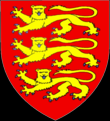 |
| St George's Flag, the England Flag | Three Lions Emblem |
 |  |
| The three lions are on the badge of England's cricket team | The three lions are on the badge of England's football team |
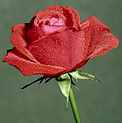 |  | 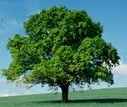 |
| The red rose is widely recognised as the national flower of England. | The red rose is on the badge of the English Rugby Union team. | The oak is the national tree of England |
The Royal Family
 |  |  |
| Queen Elizabeth | Prince Charles | Prince William |
| Royal Guards | |||
 |  | 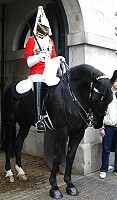 | 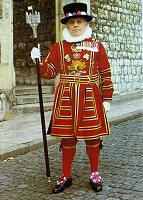 |
| Life Guard | Foot Guard | Life Guard on Horseback | Beefeater |
On the Street
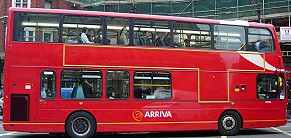 | 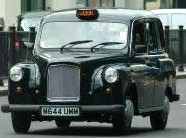 |
| Red Double Decker buses | Black taxi cabs |
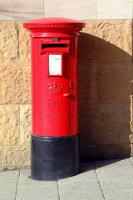 | 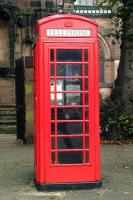 |
| Pillar Box (Post Box) | Telephone box |
| B   oth the post box and telephone box have a picture of a crown on them. The crown on the postbox also has the monarchs initials underneath. We have postboxes with VR (Victoria Regina) and GR (Georgeus Rex) still in use today. oth the post box and telephone box have a picture of a crown on them. The crown on the postbox also has the monarchs initials underneath. We have postboxes with VR (Victoria Regina) and GR (Georgeus Rex) still in use today. Victoria Regina is latin for Queen Victorian and Georgeus Rex is latin for King George. | |
| Famous People | ||
 |  | 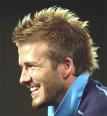 |
| Winston Churchill | Queen Victoria | David Beckham |
| Famous Landmarks | ||
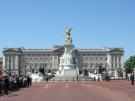 |  |  |
| Buckingham Palace | London Eye | Big Ben |
| Food and Drink | |
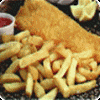 |  |
| Fish and chips | Cup of tea |
| Sports | ||
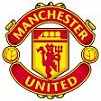 | 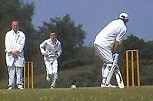 |  |
| Football | Cricket | Wimbledon (The home of Tennis) |
The United States of America
Fact File
The earliest known use of the name America for this particular landmass dates from April 25, 1507. America is the feminine form of Americus. Americus Vespucius is the Latinized version of the Florentine explorer Amerigo Vespucci's name. Vespucci's role in the naming issue, like his exploratory activity, is unclear. Some sources say that he was unaware of the widespread use of his name to refer to the new land.
Total Area: 42,549,000 square km
Population: 910,720,588
Languages: Spanish, English, Portuguese, French, and many others
Motto: “In God We Trust” (Each of the 50 United States also has a motto)
National anthem: “The Star Spangled Banner”
Capital: Washington
Largest cities: New York City (8,3 mln), Los Angeles (3,8 mln), Chicago (2,9 mln)
Government: Presidential republic
States: fifty states and one independent district – the District of Columbia.
Head of state: President
Longest river: The Mississippi River (about 2,320 miles (3,730 km) long)
Highest mountain: Sierra Nevade. The highest point is Whitney at 14,494 ft. (4,418 meters).
Currency: American dollar
National holiday: Independence Day (July 4), Thanksgiving Day (fourth Thursday in November)
National symbols: The Statue of Liberty, Declaration of Independence, the Bill of Rights, Great Seal of the United States, the U.S. flag, American Bald Eagle, the rose
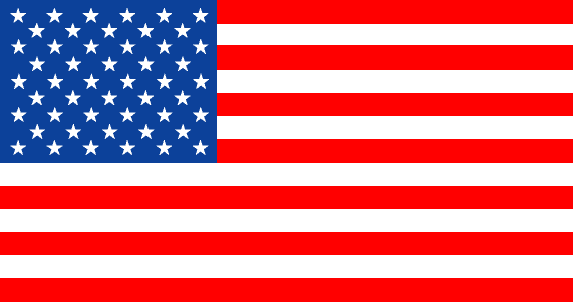
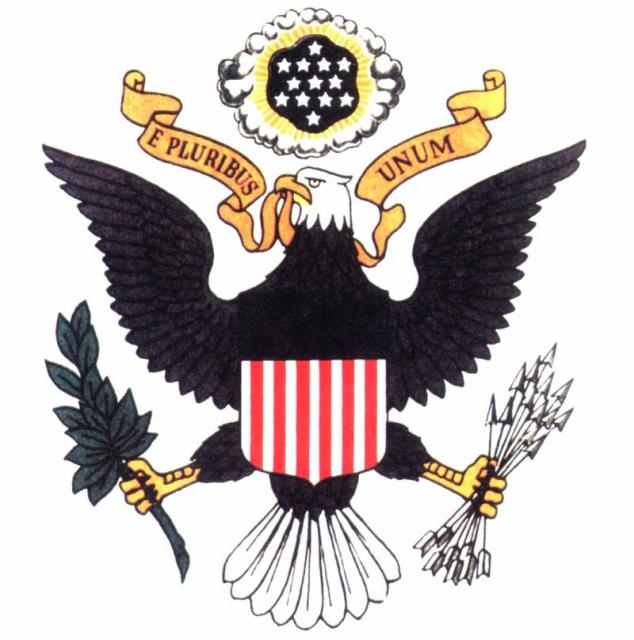
Ex. 1. Practise the pronunciation of the following geographical names:
